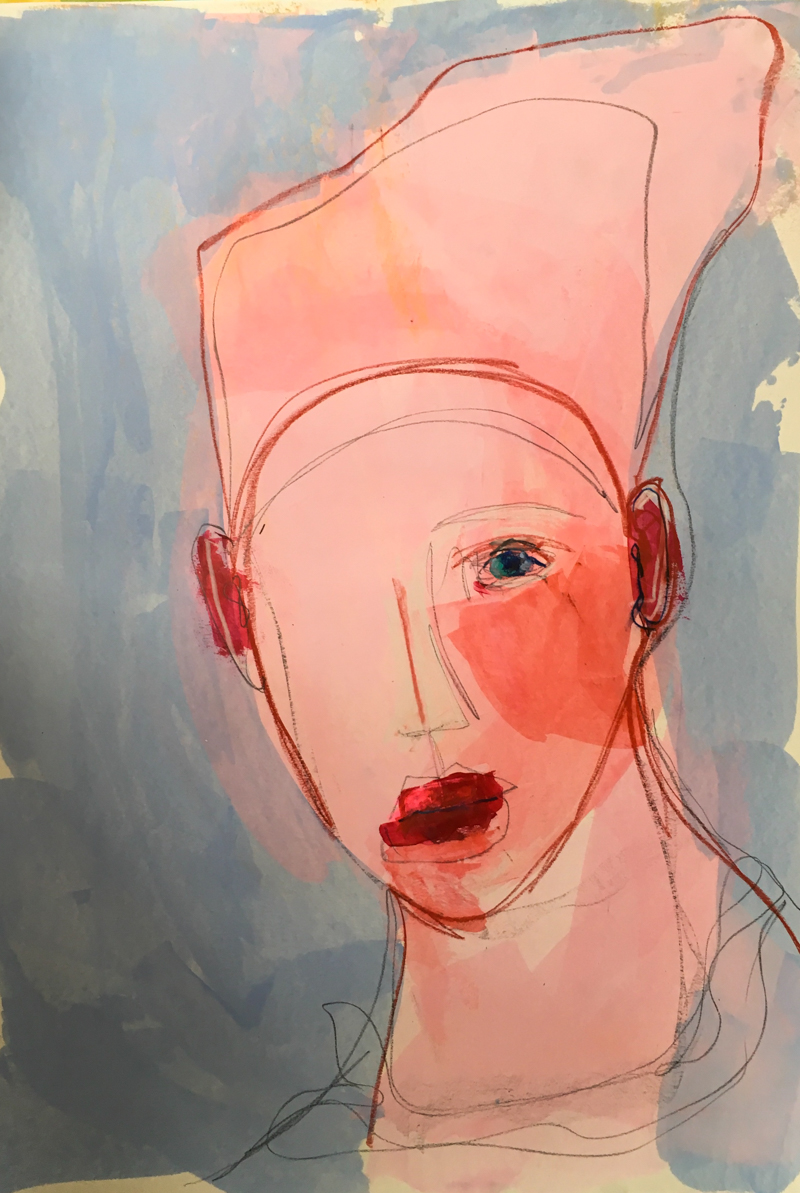
1) Who and where are you from?
My name is Henrike Gomber. I’m a German artist, based near Frankfurt.
2) What brought you to Art?
The work with ‚typical’ arts-materials like paper and colour accompanies me throughout my whole life. For many years I worked in product-design, as illustrator and colorator in different companies, professions where contact to colour and material is elementary. Painting in my leisure time has always been a relaxation and a hobby for me. But only when I went through a private and professional crisis I realized that painting means more to me then only a pastime, an amusement. It helped me to overcome problematic life-situations, it helped me to canalize and to free all the creativity and ideas that were stuck inside me.
3) What is your driving force?
Since I had that very realization I can hardly stop painting, it is like an addiction, but a healthy addiction.
I am moved by an inner energy which I can barely describe. I start a painting without thinking about a concept. I sit in front of the empty paper and think of: Nothing!
Then I take a brush or a spatula, dip it into some acrylic paint, without reflecting. And then it commences: Colour surfaces arise, they overlie themselves, they complement themselves. Then I take a pen or a wax crayon, draw contours. Figures arise, some of them dissolve, some complement themselves and add up to an image. And suddenly, before I know why, I feel that the picture is completed. And literally I awake from this inebriety and wonder why the painting looks the way it does. This inner monologue, or better this dialogue with myself, with my creativity, gives me strength and makes me happy. And if other people like the result: wonderful!
4) What kind of work you do and why?
I almost exclusively paint human heads. And I say heads with intent, because these aren’t portraits. They are abstracted, mask-like faces with human attributes.
I usually work with acrylic paint and ink on paper. As a starting point I take one or more abstract colour surfaces and on these surfaces I draw contours and outlines. With the help of these lines the eye of the spectator gets foothold. Recognizable forms like eyes, ears or headgears arise.
I like this interplay of abstraction and concretion, of the two-dimensional surface and depth. And I like that my faces express emotions. As a spectator, and I identify myself as a spectator, too, you can get in contact with the faces immediately and overcome the separation of reality and illustration. But I don’t want to dictate a certain interpretation of my work: The faces speak for themselves and every spectator receives his individual message.
5) Tell us more about your thought process.
As I tried to describe before, I don’t think about a concept before I start painting. I don’t do sketches beforehand and I don’t work with models. I rather give rein to my intuition and allow free play to my creativity within the frames set by the paper. For me it is fascinating that in spite of all the liberty of my rational thoughts, certain formal features appear regularly. Let me give you some examples: my heads often wear headgears as crowns, turbans or open forms. I mostly depict busts; the posture of the head is always precise, the posture of the body is only suggested by neck and shoulders. So my faces are not reduced to the section from chin to skullcap but are expanding to all sides.
These formal expansions of my heads symbolize opening and protection at the same time. The fact that I repeat these formal features over and over again shows that behind my conscious, rational personality there seems to be another artist-individual inside me. And this artist-individual wants to discover the variety of human illustrations over and over again. And I appreciate that, since I like my faces and spend a lot of time with them in my studio.
6) Please share with us the one modern artist whose work you find Interesting and why?













For more of Henrike Gomber Check the links below:
Website :- https://www.henrikegomber.de/
Instagram :- https://www.instagram.com/henrikegomber/
All Images are copyright by: Henrike Gomber

Thanks for another great post.This is so amazing.
ReplyDeleteI see that your posts are well written! Good job!
ReplyDeleteChristmas traditions Blog di Babbo Natale
Read all kinds of articles about Business Entities? Here is one that will keep your head from spinning. From sole proprietorship to corporations, you will learn the differences between the most common business entities. Human Design Reading
ReplyDelete